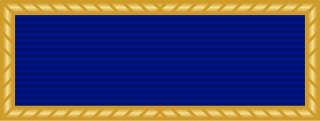Related Research Articles

The Army of the Republic of Vietnam composed the ground forces of the South Vietnamese military from its inception in 1955 to the Fall of Saigon in April 1975. At the ARVN's peak, an estimated 1 in 9 citizens of South Vietnam were enlisted, composed of Regular Forces and the more voluntary Regional Forces and the Popular Force militias. It is estimated to have suffered 1,394,000 casualties during the Vietnam War.
The Royal Australian Regiment (RAR) is the parent administrative regiment for regular infantry battalions of the Australian Army and is the senior infantry regiment of the Royal Australian Infantry Corps. It was originally formed in 1948 as a three battalion regiment; however, since then its size has fluctuated as battalions have been raised, amalgamated or disbanded in accordance with the Australian government's strategic requirements. Currently, the regiment consists of seven battalions and has fulfilled various roles including those of light, parachute, motorised and mechanised infantry. Throughout its existence, units of the Royal Australian Regiment have deployed on operations in Japan, Korea, Malaya, Borneo, Vietnam, Somalia, Rwanda, Cambodia, East Timor, the Solomon Islands, Iraq and Afghanistan.

The Royal New Zealand Infantry Regiment is the parent administrative regiment and corps of regular and reserve infantry battalions in the New Zealand Army. It was originally formed in 1947 with a singular Regular regiment and multiple reserve regiments. Over time, the regiments were turned into battalions, the reserve units amalgamated and more regular units raised and disbanded. Currently, the Regiment currently consists of two regular and three reserve battalions. Throughout its existence, units raised in this regiment have served and deployed on operations in Malaya, Vietnam, Borneo and various United Nations peacekeeping operations.

The 4th Battalion, Royal Australian Regiment was an infantry battalion of the Australian Army, forming part of the Royal Australian Regiment and eventually Special Operations Command. The battalion was formed on 1 February 1964, converted to a special forces unit on 1 February 1997, and was renamed the 2nd Commando Regiment on 19 June 2009.

The Presidential Unit Citation (PUC), originally called the Distinguished Unit Citation, is awarded to units of the uniformed services of the United States, and those of allied countries, for extraordinary heroism in action against an armed enemy on or after 7 December 1941. The unit must display such gallantry, determination, and esprit de corps in accomplishing its mission under extremely difficult and hazardous conditions so as to set it apart from and above other units participating in the same campaign.

6th Battalion, Royal Australian Regiment is a mechanised infantry battalion of the Australian Army. It was originally raised in Brisbane, Queensland, on 6 June 1965 and has since then served in a number of overseas deployments and conflicts including South Vietnam, East Timor, Iraq and Afghanistan. During the Vietnam War, the battalion earned a US Presidential Unit Citation from the United States when members from 'D' Company participated in the Battle of Long Tan on 18–19 August 1966. The battalion is currently based at Gallipoli Barracks in Brisbane and forms part of the 7th Brigade.

The 1st Australian Task Force was a brigade-sized formation which commanded Australian and New Zealand Army units deployed to South Vietnam between 1966 and 1972. 1 ATF was based in a rubber plantation at Nui Dat, 8 kilometres (5.0 mi) north of Bà Rịa in Phuoc Tuy Province and consisted of two and later three infantry battalions, with armour, aviation, engineers and artillery support. While the task force was primarily responsible for securing Phuoc Tuy Province, its units, and the Task Force Headquarters itself, occasionally deployed outside its Tactical Area of Responsibility.

The 3rd Battalion, Royal Australian Regiment is a mechanised infantry battalion of the Australian Army, based in Kapyong Lines, Townsville as part of the 3rd Brigade. 3 RAR traces its lineage to 1945 and has seen operational service in Japan, Korea, Malaya, Borneo, South Vietnam, Rifle Company Butterworth, East Timor, the Solomon Islands, Afghanistan and Iraq.

Phan Rang Air Base is a Vietnam People's Air Force (VPAF) (Khong Quan Nhan Dan Viet Nam) military airfield in Vietnam. It is located 5.2 miles north-northwest of Phan Rang – Tháp Chàm in Ninh Thuận Province.

Australia's involvement in the Vietnam War began with a small commitment of 30 military advisors in 1962, and increased over the following decade to a peak of 7,672 Australian personnel following the Menzies Government's April 1965 decision to upgrade its military commitment to South Vietnam's security. By the time the last Australian personnel were withdrawn in 1972, the Vietnam War had become Australia's longest war, eventually being surpassed by Australia's long-term commitment to the War in Afghanistan. It remains Australia's largest force contribution to a foreign conflict since the Second World War, and was also the most controversial military action in Australia since the conscription controversy during World War I. Although initially enjoying broad support due to concerns about the spread of communism in Southeast Asia, an increasingly influential anti-war movement developed, particularly in response to the government's imposition of conscription.

1st Military Intelligence Battalion (Aerial Exploitation), nicknamed the "Flying Eye Battalion", is a unit of the United States Army which specializes in the acquisition of aerial signals information in direct support of the 66th Military Intelligence Brigade. 1st MI Battalion (AE) is currently headquartered at Lucius D. Clay Kaserne in Germany.

New Zealand's involvement in the Vietnam War was controversial, sparking widespread protest at home from anti-Vietnam War movements modelled on their American counterparts. This conflict was also the first in which New Zealand did not fight alongside the United Kingdom, instead following the loyalties of the ANZUS Treaty.

The 8th Battalion, Royal Australian Regiment was an Australian Army Regular infantry battalion. The battalion was formed in July 1966 as part of an expansion of the Australian Army in the mid-1960s due to the perceived threat of Communism in southeast Asia. Initially the battalion was sent to Malaysia in 1967, before later being sent to South Vietnam as part of Australia's commitment to the Vietnam War. Between November 1969 and October 1970 the battalion undertook operations as part of the 1st Australian Task Force, before being brought back to Australia. In October 1973, after Australia's involvement in Vietnam officially ended, the battalion was amalgamated with 9 RAR to form 8/9 RAR.

The 9th Battalion, Royal Australian Regiment was a Regular light infantry battalion of the Australian Army. The battalion was raised in November 1967 and deployed to South Vietnam as part of Australia's commitment to the Vietnam War in November 1968. 9 RAR served a year-long tour of duty based out of Nui Dat conducting operations mainly in Phuoc Tuy Province as part of the 1st Australian Task Force. The battalion returned to Australia in November 1969 and was re-formed at Enoggera, Queensland in January 1970 as part of the 6th Task Force, attached to the 1st Division. On 31 November 1973, following the withdrawal of Australian forces from South Vietnam and subsequent reduction of the Australian Army, the battalion was linked with the 8th Battalion, Royal Australian Regiment to form the 8th/9th Battalion, Royal Australian Regiment.

The order of battle of Australian forces during the Vietnam War consisted of a small group of military advisors from 1962, but grew to include an infantry battalion based in Bien Hoa in 1965. This force was then replaced by a two- and later three-battalion task force with supporting arms based at Nui Dat which operated primarily in Phuoc Tuy Province between 1966–71, with logistic elements at Vung Tau. Airforce units committed initially consisted of transport aircraft, but were followed by helicopters and later bombers, while naval forces included destroyers and transport vessels. With the size of Australian forces in Vietnam reaching a peak in early 1968, a drawdown commenced in late 1970, with the bulk withdrawn by early 1972. The last elements returned to Australia in 1973. In total, around 50,000 Australians served during the Vietnam War, including 42,437 members of the Australian Army, 3,310 from the Royal Australian Navy (RAN), and 4,443 from the Royal Australian Air Force (RAAF), with casualties including 519 killed and 2,348 wounded.

The 9th Infantry Division (พล.ร.๙.) also known as Black Panthers Division is an infantry division of the Royal Thai Army, it is currently a part of the First Army Area. The unit is composed of the 9th Infantry Regiment, 19th Infantry Regiment and 29th Infantry Regiment.
References
- 1 2 3 4 5 6 7 8 9 10 11 12 13 14 15 16 17 "Vietnam Archive Operations Database". The Vietnam Center and Archive.
- ↑ Cosmas, G (1986). US Marines in Vietnam: Vietnamization and Redeployment 1970-1971. US Government printing Office. p. 214. ASIN B000KA9ZRO.
- 1 2 Fulghum, David (1984). The Vietnam Experience:South Vietnam on Trial Mid 1970-1972. Time-Life Books. ISBN 978-0-939526-10-9.
- ↑ "Operation Finney Hill - After Action Report". Archived from the original on 2011-04-22. Retrieved 2010-07-23.
- ↑ Adjutant General's Office (Army) (19 Aug 1971). "Lessons Learned, 1st Inf Bde, 5th Inf Div (Mech), RCS CSFOR - 65 (R3)". Archived from the original on 23 August 2011. Retrieved 23 July 2010.
- ↑ "Snoul Battle and its Consequences (M)".
- ↑ "Rattler/Firebird History".
- ↑ "3rd Battalion Royal Australian Regiment". Australian War Memorial.
- ↑ Ian Kuring. "Australian Task Force Operations in South Vietnam 1966-1971" (PDF).[ permanent dead link ]
- ↑ "2nd Squadron, Special Air Service Regiment". Australian War Memorial.
- ↑ "Vietnam Operations by name".
- ↑ Bowman, John S. (1989). The Vietnam War Day by Day. Mallard Books. ISBN 0-7924-5087-6.
- ↑ Solheim, Bruce (2008). The Vietnam War Era: A Personal Journey. Bison Books. p. 154. ISBN 978-0-8032-1775-1.
- ↑ "4th Battalion, The Royal Australian Regiment – New Zealand (ANZAC)". Australian War Memorial.
- ↑ Tucker, Spencer (2011). The Encyclopedia of the Vietnam War: A Political, Social, and Military History. ABC-CLIO. p. 939. ISBN 978-1-85109-960-3.